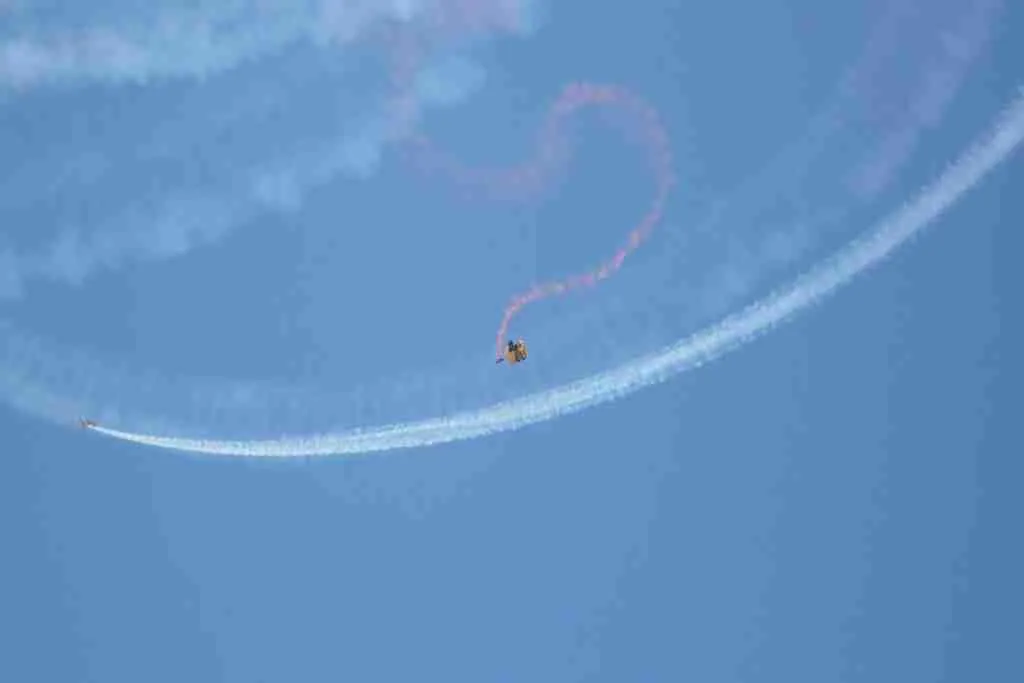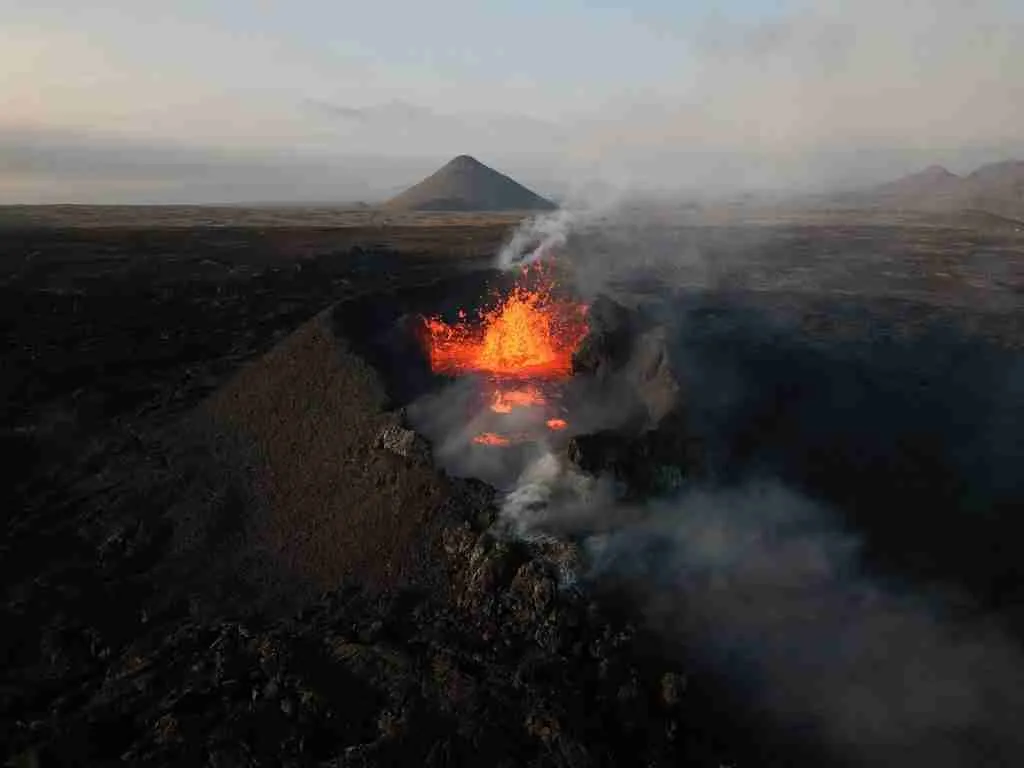26 Fun Facts About Skydiving | You Never Knew
-
Tandem skydiving lets beginners jump with an instructor for a thrilling start.
-
The highest tandem jump ever reached 135,890 feet.
-
Skydivers naturally assume a stable position in freefall due to aerodynamics.
-
Freefall creates a weightless sensation similar to astronaut experiences.
-
Skydiving has age limits but no maximum age, promoting inclusivity.
-
Skydivers have their own unique jargon and terminology.
-
High-altitude skydivers may need oxygen masks.
-
Skydiving has been used in marriage proposals, adding a romantic twist to the adventure.
-
Some daredevils attempt u0022No Parachuteu0022 jumps with designated catchers.
-
Skydiving competitions include u0022Accuracy Landingu0022 for precision landings.
-
u0022Cutaway and reserveu0022 is a procedure for parachute malfunctions.
-
Smoke grenades add colorful trails to skydiving demonstrations.
-
Skydiving aids scientific research on high-altitude jumps and physiology.
-
Freefall sensations can vary, with some describing it as u0022falling up.u0022
-
Skydiving organizations promote safety, training, and international cooperation.
Table of Contents
1. Skydiving reaches speeds over 120 mph in freefall.
Skydivers can fall at speeds exceeding 120 mph during freefall due to gravity pulling them down and air resistance. A belly-to-earth position typically results in a speed of about 120 mph, while a head-down position can increase it to 180 mph.
The record for the fastest skydive was set by Felix Baumgartner in 2012, when he broke the sound barrier at 843.6 mph, jumping from the edge of space.
2. Tandem skydiving has a fatality rate of 0.006 per 1,000 jumps.
Tandem skydiving, where a first-time jumper is attached to an experienced instructor, is incredibly safe. The fatality rate is just 0.006 per 1,000 jumps, making it safer than many everyday activities like driving.
With expert instructors and modern equipment, tandem skydiving accounts for 80% of all jumps in the U.S., providing a secure experience for beginners.
3. Modern parachutes include automatic activation devices for safety.
Today’s parachutes come with Automatic Activation Devices (AADs) that deploy a reserve parachute if the skydiver doesn’t do so at the right altitude. These devices have saved many lives by ensuring that a parachute is deployed during emergencies.
The introduction of AADs has been a game-changer in making skydiving much safer, adding an extra layer of protection for jumpers.
4. Record jump from 102,000 ft was by Joe Kittinger.

READ ALSO: 25 Fun Facts About Skiing | From Slopes to Snowflakes
Joe Kittinger’s remarkable skydive from the astonishing altitude of 102,000 feet, as part of Project Excelsior in 1960, remains an enduring testament to human high-altitude skydiving.
This historic leap not only defied the bounds of what was thought possible but also advanced our understanding of how humans could navigate extreme altitudes. Kittinger’s courageous achievement pushed the envelope and inspired generations of skydivers and adventurers.
5. The U.S. skydiving fatality rate has significantly decreased since 1961.
The fatality rate in skydiving has dropped significantly since 1961. Improvements in training, technology, and equipment have helped make skydiving much safer.
In 2024, the U.S. recorded just nine skydiving fatalities, which is considered an all-time low, showing how far the sport has come in safety.
6. Experienced jumpers often use reserve parachutes, with 5,000 deployments in 2024.
Experienced skydivers often carry reserve parachutes in case the main parachute fails. In 2024, over 5,000 reserve parachute deployments were reported.
Although rare, these deployments are critical for ensuring safety, as jumpers are trained to respond to emergency situations during freefall.
7. In 2024, there were only nine civilian skydiving fatalities in the U.S.
Skydiving fatalities have drastically decreased in the U.S. with only nine civilian deaths reported in 2024. This shows how advancements in training and equipment have made skydiving one of the safest extreme sports.
Compared to other high-risk activities, skydiving’s fatality rate continues to drop year after year.
8. Freefall speeds vary based on body position.
A skydiver’s body position significantly impacts their freefall speed. In a belly-to-earth position, they fall at around 120 mph, but in a head-down position, the speed can reach 180 mph.
Controlling body position is key for competitive skydiving, where precision and speed are essential.
9. Skysurfing combines surfing and skydiving.
Skysurfing is a thrilling hybrid of skydiving and surfing, as jumpers ride specially designed boards during freefall.
This dynamic discipline adds an extra layer of adventure to the sport, allowing participants to carve the sky with surf-inspired maneuvers.
10. The first parachute jump was made by Andre-Jacques Garnerin in 1797.
Andre-Jacques Garnerin made the first recorded parachute jump in 1797, jumping from a hot air balloon in Paris. His jump marked the beginning of modern parachuting and led to future innovations.
This historic event paved the way for the development of the sport as we know it today.
11. Competitive skydiving began in the 1950s with events like formation and freestyle.
Competitive skydiving emerged in the 1950s, featuring events like formation skydiving and freestyle. In formation skydiving, teams create aerial patterns, while freestyle involves acrobatic maneuvers during freefall.
These competitions have grown into a global sport, attracting skydivers from around the world.
12. Felix Baumgartner’s Leap From Space in 2012.
READ ALSO: 24 Fun Facts About Baseball That Will Knock Your Socks Off
In 2012, Felix Baumgartner became the first person to break the sound barrier in freefall, jumping from over 24 miles above Earth in a Red Bull Stratos mission.
His journey was fraught with danger, as he entered a terrifying spin and had to fight to regain control. But he persevered, landing safely and setting a new world record.
13. Skydiving fatalities have dropped, thanks to improved technology and training.
Skydiving fatalities have reduced due to technological advancements like automatic activation devices and improved training. These innovations have made skydiving safer, with more stringent protocols for jumpers.
These developments have made skydiving one of the safest extreme sports today.
14. In 2020, 11 deaths occurred from 2.8 million jumps worldwide.
While skydiving may seem risky, the statistics show otherwise. In 2020, only 11 fatalities were reported from 2.8 million jumps worldwide, showing the sport’s relative safety.
The low fatality rate highlights the effectiveness of safety protocols and modern equipment.
15. Skydiving operations have fewer aircraft accidents due to specialized pilot training.
Skydiving aircraft are specially equipped and piloted by professionals trained to handle the unique demands of the sport. These pilots are prepared for challenging air conditions and precise operations, which reduces the likelihood of accidents.
The specialized training ensures that skydiving aircraft are safer than general aviation planes.
16. Night jumps with LED suits are exhilarating.

READ ALSO: 21 Facts About Cricket You May Not Know
Night skydiving takes on a whole new dimension of excitement with the use of LED suits.
These illuminated suits create enchanting light trails as jumpers descend through the darkened sky, transforming the experience into a visually stunning spectacle that is both thrilling for the participants and captivating for onlookers.
Night jumps with LED suits showcase the fusion of technology and adventure in the world of skydiving.
17. The team skydiving world record involved 164 participants.
Skydiving isn’t just an individual sport, team skydiving involves complex formations created by groups of jumpers. The world record for the largest team skydiving formation is 164 participants.
This event demonstrated the coordination and precision required to pull off such a large-scale jump.
18. Jay Stokes holds the record with 640 jumps in a single day.
Jay Stokes set the record for most skydives in a single day with 640 jumps. This incredible feat required intense endurance, performing multiple jumps every hour.
Stokes’ record highlights the dedication and physical stamina required to excel in skydiving.
19. Skydivers use hand signals to communicate during freefall due to wind noise.
Due to the extreme wind noise during freefall, skydivers rely on hand signals to communicate with their team or instructors. These signals are essential for sharing important information, like when to deploy the parachute.
The ability to communicate mid-air is crucial for ensuring safety during the jump.
20. Smoke trails create stunning visual effects.

READ ALSO: 25 Fun Facts About Soccer You Never Knew
Smoke trails, commonly used in airshows and aerial displays, enhance the visual spectacle of skydiving.
These mesmerizing trails add a captivating element to the sport, turning every jump into a dynamic performance that enchants both participants and spectators.
21. Skydiving is statistically safer than rock climbing or white-water rafting.
Skydiving has a lower fatality rate than activities like rock climbing or white-water rafting. This is due to improved equipment, training, and safety protocols.
Skydiving is now considered one of the safest extreme sports.
22. Smokejumpers combat wildfires from the air.
Smokejumpers are elite firefighters who employ skydiving skills to parachute into remote wilderness areas and combat wildfires.
Their missions involve the fusion of bravery, environmental conservation, and a commitment to safeguarding our natural landscapes.
23. Freefall feels like floating due to air resistance.
Freefall at 120 mph doesn’t feel like falling; it feels like floating. Air resistance creates a weightless sensation, similar to floating in a pool.
This unique feeling is what makes skydiving so exhilarating and different from other extreme sports.
24. Jumps over active volcanoes are awe-inspiring.

READ ALSO: 21 Fun Facts About Volleyball: Spiking Your Knowledge
Skydiving over active volcanoes is a heart-pounding endeavor that offers unparalleled views and pushes the boundaries of extreme sports.
The juxtaposition of human adventurers against the backdrop of volcanic activity makes for a breathtaking and audacious spectacle.
25. Photographers use mouth-operated switches to capture images mid-jump.
Skydiving photographers use mouth-operated switches to take photos during freefall. These switches allow photographers to capture high-quality images without using their hands, which would be impossible in the strong wind.
This technique enables photographers to snap stunning shots during the jump while maintaining control of the camera.
26. In Switzerland, 20 fatalities occurred over two decades (2000-2022).
In Switzerland, only 20 fatalities occurred over two decades, a testament to the country’s safety standards and rigorous training. This low fatality rate is a result of advanced equipment and well-trained instructors.
Switzerland is known for its high safety standards in skydiving, making it one of the best places to skydive.
FAQs
Skydiving is often considered scarier than bungee jumping due to the prolonged freefall and higher speeds involved.
The scariest part of skydiving is the moment you jump out of the plane, when you’re faced with the initial fear of freefall.
Yes, skydiving can be scary at first, especially when you’re preparing to jump, but many people feel exhilarated once they experience it.
The skydiving fatality rate is approximately 0.006 per 1,000 jumps, making it one of the safest extreme sports.
If you’re scared, consider tandem skydiving with an experienced instructor for a safer and more reassuring first experience.





